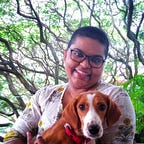We need to manage water better to ensure drinking water security.
But it will be hard.
This blogpost is a compilation of the points made by CSEI director, Dr. Veena Srinivasan at the water resource management webinar organised jointly by Water for People and IRC on Wed, 9 June 2021. Veena was part of a panel discussion on the research and policy aspects of WRM. The other panelists were Dr. Himanshu Kulkarni (ACWADAM), Dr. Manab Roy (SIGMA Foundation) and Shashank Deshpande. The session was moderated by Ruchika Shiva (IRC).
In Water Resources Management (WRM) the argument has been that we can plan drinking water schemes without worrying too much about whether we actually have enough water. This is because drinking water always has first priority though it accounts for only about 10% of freshwater usage.
Drinking water demand itself may be small. But it shares common supply sources with agriculture and industry (whether dams or aquifers). Therefore water available for drinking water needs is impacted by water used by agriculture and industry.
Now 80% of rural India’s drinking water is groundwater dependent. We know that groundwater depletion is a problem in up to 40% of the village blocks in India. Moreover, both natural and manmade contaminants (geogenic and anthropogenic) pose a threat, as most rural treatment systems in India are set up only to address bacterial contamination. Climate change only complicates this further.
Despite these recognised links, in practice, we are not able to address this complexity.
Key research questions for CSOs and the government
- What is the slippage in public rural drinking water access attributable to source unsustainability? Or what has been the additional infrastructure spending to prevent slippage? (Slippage is the percentage of localities in a village that once had drinking water but no longer do, because the scheme has failed)
- What impact did the slippage have? Did people simply cope by switching to unsafe sources? Did they switch to more expensive RO-based provision?
- Can we classify the vulnerability of drinking water projects to both source water quality and sustainability — noting the different physiographical (topography, geology etc.) conditions across India?
- Have there been successful efforts in planning for WRM in the context of rural drinking water projects? Can these be scaled?
Asking these questions does not automatically guarantee acceptance of the evidence and research done.
Bottlenecks in WRM
The problem is that our institutions and agencies are not set up to enable WRM.
The administration bottleneck: In most states, drinking water is with the department of Rural Development and Panchayat Raj (RDPR) while water resources is under the Department of Water Resources. And the scale at which the government works may be too large to plan for specific drinking water schemes at the village level.
The knowledge bottleneck: Grassroots level civil society organisations (CSOs) are better equipped and willing to collect detailed data. Yet, there remain challenges both in generating data and evidence as well as ensuring its acceptance and uptake. Communities have traditional wisdom about how water resources in their region traditionally behaved, even if they don’t know the technical terms. But when “new” challenges are introduced by modernisation such as dams, borewells, or industrial pollution, old wisdom may break down and we may need new capacity to blend old wisdom with modern science-based approaches.
The data bottleneck: It is surprisingly hard to find consolidated data on water resources, because this involves pulling together different types of data— sensor measurements for groundwater or tank levels, farm surveys or well-pumping records for water abstraction. But often these are critical gaps, making it difficult to reconstruct the whole water balance. There is a real need to build capacity in data collection, including digital tools.
The expertise bottleneck: Creating a water budget involves specialised knowledge. In our experience although CSOs have excellent field data, the data are not always correctly analysed to produce scientifically defensible budgets. There is a need to build tools (and train communities to use them) to demystify the science and simplify complex analytical tasks, without losing their accuracy.
The communication bottleneck: There is a perception that research is only credible if it is presented as a peer-reviewed publication. As a result, the vast majority of the data collected never gets published at all. There is a real need to create new forms of communication of data e.g. data storytelling — that are credible, verifiable, and easy to generate.
Making data available and usable to diagnose the source sustainability problem accurately and transparently is an important first step. Once this is made clear, it can be used to initiate a conversation about how much, if any, water abstraction needs to be reduced or recharge can be improved.
Join our mailing list to know more about the solutions CSEI is designing to tackle these bottlenecks in WRM.
